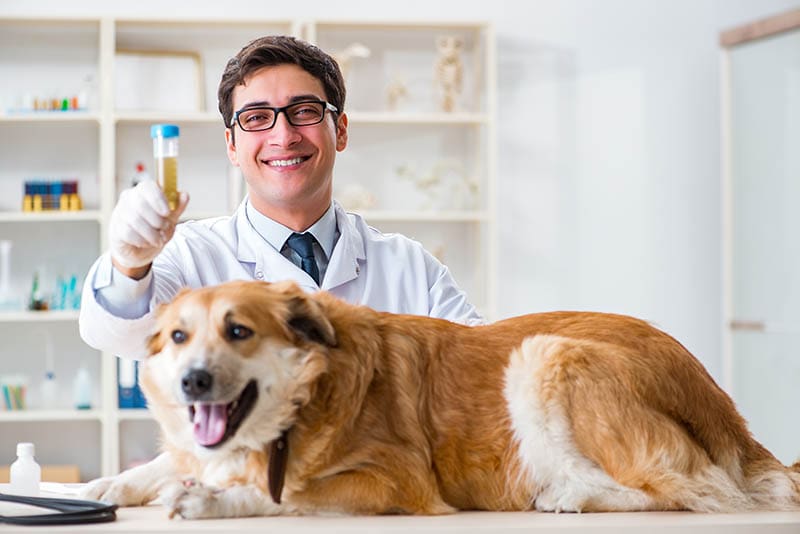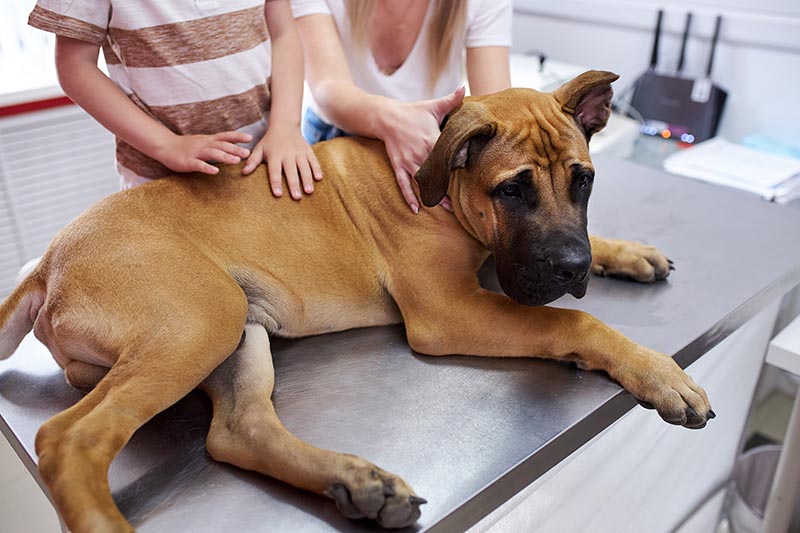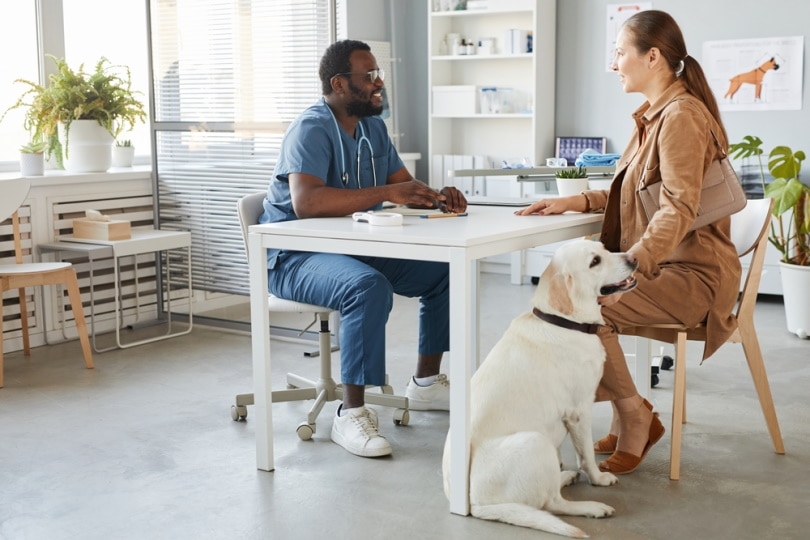
Click to Skip Ahead
The color of your dog’s urine can give you a lot of important information about your dog’s health and whether a visit to your veterinarian is required. While there is definitely a normal color range, it is necessary to know the normal color for your individual dog to realize when this has gone astray and to be aware of any signs of illness they may be presenting.
If you are unsure about whether your dog’s urine is a normal color, you can collect the urine in a clean, clear container and place it against a white background for further clarification. This may not be the easiest task in the world, and it isn’t something you need to do daily—only if you wish to double-check the color or are collecting a sample for investigation. However, a quick sample can be extremely helpful in determining if everything is functioning properly inside your dog. And if you’re ever unsure, it never hurts to take a trip to the vet’s office.
What Does Normal Dog Urine Look Like?
The color of normal, healthy dog urine should be a shade of yellow. It may range from a pale golden yellow to a darker yellow. The depth of yellow will vary depending on your dog’s hydration levels, meaning the darker the shade of yellow, the less hydrated they are. For example, you may notice your dog’s pee is darker first thing in the morning than it is the rest of the day.
Urine obtains its yellow color from a substance called urochrome. The more urochrome there is, the darker the shade of yellow the urine will be.
Normal urine should be transparent and not cloudy, contain no debris or discoloration, and have no offensive or strange odor to it.

What Does Unhealthy Dog Urine Look Like?
Once you are aware of the normal color ranges of yellow urine, it is easier to notice when it is abnormal. Any of the following signs mean your dog needs a check-up with your veterinarian.
What Does the Color of My Dog’s Urine Mean? The 4 Abnormal Colors of Dog Urine
There are four colors to be familiar with as a pet parent. Each of these raises a red flag, meaning a visit to your veterinarian is needed.
1. Dark Yellow
Often, darker yellow urine indicates your dog needs to drink more water or hasn’t had enough in the hours beforehand and, therefore, has or is becoming dehydrated. Ensure water bowls are full, filled with fresh, clean water, and are not frozen over if you are in a cold climate. Keep pet travel water bottles or standard bottles filled with water in your car for any journeys or on your person for long walks or when out on hot days. Once properly hydrated, the urine returns to its normal yellow shade.
However, should this shade of yellow continue, a visit to the veterinarian is needed, as it can be related to other health concerns and diseases.
2. Brown
Urine that is brown in color or even black indicates a serious condition and immediate veterinary attention is required. Multiple reasons can cause brown-colored urine; for example, trauma—a hit to the body, a fall, or a road accident causing muscle and/or organ damage. This results in hemoglobin from the red cells leaking out into the body and subsequently into the urine system. Toxins such as garlic, onion, acetaminophen (Tylenol), and metaldehyde that your dog has consumed can also cause this issue.

3. Orange
Certain medications cause urine to have an orange appearance, as can severe dehydration, but it is often linked to jaundice, a condition turning tissues more yellow, and is a sign of a bigger health problem, commonly those of the liver and liver function.
It is worth checking your dog’s gums, whites of their eyes, and inside their ears to see if the skin has a yellow tinge, as this is a further sign of jaundice. If you notice orange urine at all, an emergency trip to your veterinarian is the action to take.
4. Pink or Red
Pink or red-colored urine is mostly due to your dog’s urine containing blood and warrants a discussion and examination by your veterinarian.
Possible causes for blood in the urine include:

Conclusion
Your dog’s urine, especially the color, provides essential information about their health, and abnormalities in the color are usually a sign of a larger health issue at play. Anything outside your dog’s normal pattern and color range should be assessed by your veterinarian as soon as you take notice.
You are always the best judge of your pet and, if you haven’t already, familiarize yourself with the color of their urine—not the most pleasant job, but a very worthwhile one! Understanding what your dog’s urine should look like and does look like (normally) enables you to know when it is abnormal and allows you to seek quick and appropriate treatment.
Featured Image Credit: cunaplus, Shutterstock







